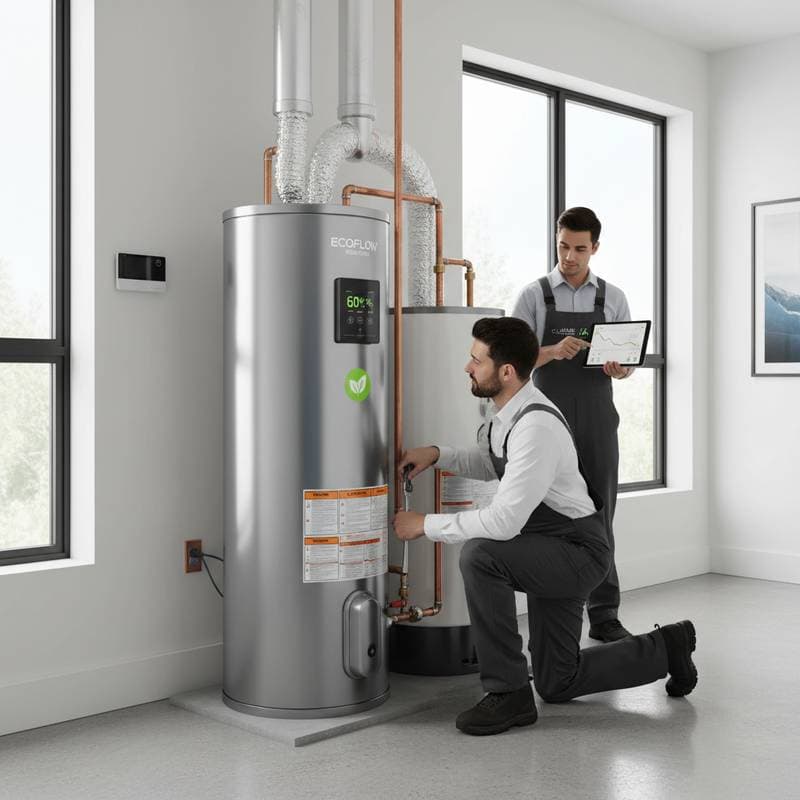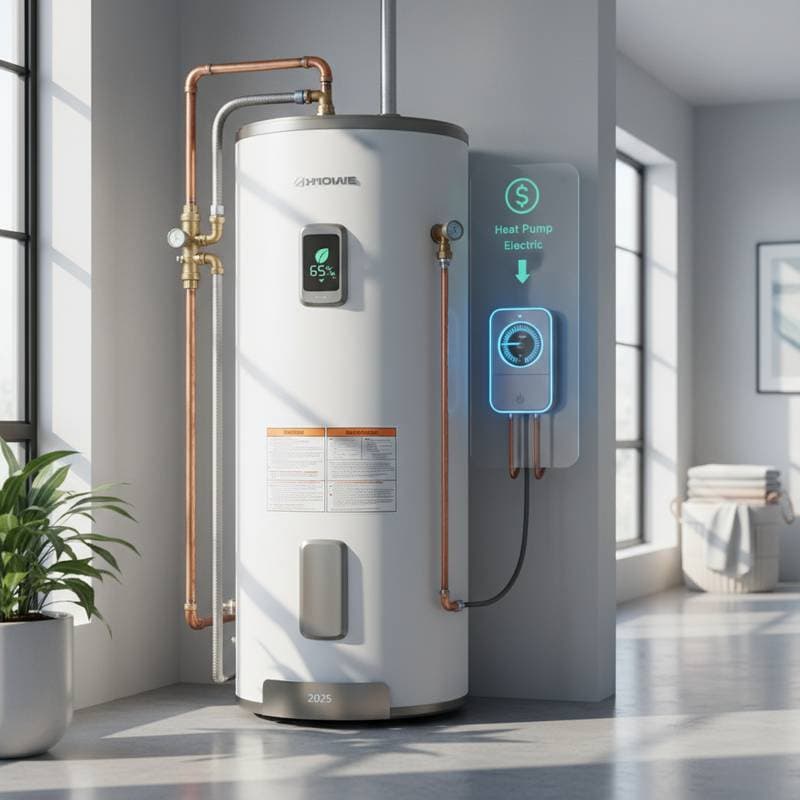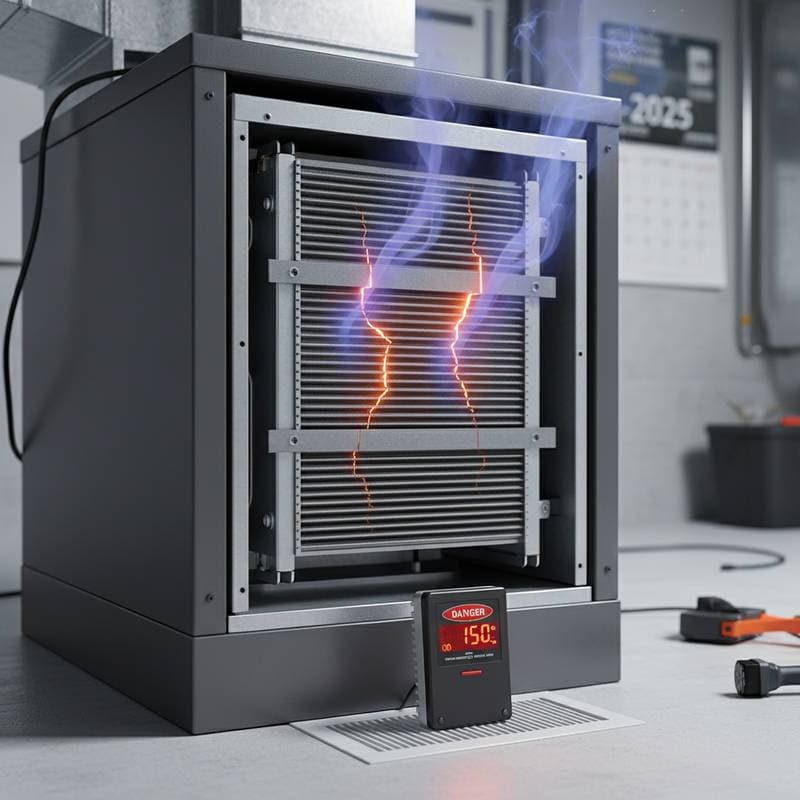Heat Pump Water Heaters: Reducing Energy Costs in 2025
Homeowners seek reliable methods to lower energy expenses while preserving daily comfort. Rising utility bills prompt many to consider upgrades that deliver substantial returns. Heat pump water heaters emerge as a leading solution, offering superior efficiency and long-term financial benefits. This guide details their operation, efficiency advantages, and essential installation considerations to help you evaluate this technology for your household.
Understanding Heat Pump Water Heaters
A heat pump water heater, sometimes referred to as a hybrid water heater, operates differently from conventional models by leveraging electricity more effectively. Rather than producing heat through resistive elements, it extracts thermal energy from the surrounding air and transfers it to the stored water. This method requires minimal electricity to power the transfer mechanism, resulting in significantly lower overall consumption.
Conventional electric water heaters depend on immersed elements that heat water directly, often running for extended periods. Heat pump models, however, utilize an evaporator coil to absorb airborne heat, a compressor to concentrate it, and a condenser to deliver it to the tank. This approach mimics the efficiency of air conditioning in reverse, harnessing environmental warmth to maintain supply with reduced energy input.
Mechanisms Behind Energy Savings
The core efficiency of heat pump water heaters lies in their heat transfer principle, which avoids the energy-intensive process of heat generation. Systems draw thermal energy from ambient air, producing equivalent hot water volumes with approximately 60 percent less electricity compared to standard electric units. Savings potential reaches several hundred dollars annually, varying by household size and local rates.
Key features contribute to these gains:
- Heat relocation over creation, minimizing electrical demand.
- Dual-mode operation, switching to resistance heating during peak usage while prioritizing the heat pump for routine needs.
- Enhanced tank insulation, such as foam cores, that retain heat and limit reheating cycles.
- Adaptive compressors that modulate speed to match hot water requirements, optimizing performance.
These elements ensure consistent operation and measurable reductions in monthly bills.
Indicators for Upgrading to a Heat Pump System
Determine suitability by assessing your current setup against these common scenarios:
- The existing water heater exceeds ten years of service and requires ongoing repairs.
- Electricity costs increase without changes in household habits.
- Hot water supply depletes rapidly during normal use.
- Indoor environments maintain moderate temperatures with adequate ventilation space.
- Efforts to decrease environmental impact align with adopting greener appliances.
Multiple matching factors suggest a heat pump water heater will address inefficiencies effectively.
Varieties of Heat Pump Water Heaters
Selection depends on spatial constraints, usage patterns, and installation preferences. Each type balances efficiency with practical integration.
Integrated Units
These all-in-one designs house the heat pump mechanism and storage tank within a compact footprint. They suit homes with accessible areas like basements or garages, simplifying setup and maintenance.
Split Configurations
Split systems separate the heat pump from the tank, enabling installation in confined or dispersed locations. This flexibility proves ideal for homes lacking centralized utility zones or facing ventilation challenges.
Retrofit Attachments
Add-on kits integrate with functional existing tanks, converting them to hybrid operation. Homeowners with serviceable conventional units benefit from this cost-effective path to improved efficiency without full replacement.
Elements Influencing Installation Expenses
Installation costs fluctuate based on multiple variables, typically ranging from regional labor rates to system specifications. Understanding these helps in budgeting accurately.
- Unit capacity and design: High-demand models or split setups command higher prices than compact integrated options.
- Residence configuration: Modifications to wiring or piping add to the total.
- Performance specifications: Units with superior energy factors involve greater initial investment but yield faster payback.
- Available rebates: Federal tax credits and local utility programs often offset 20 to 30 percent of costs.
- Professional fees: Complexity and geographic location determine labor charges, with averages between 500 and 1500 dollars.
Obtain multiple estimates to identify value-driven choices.
Professional Installation Versus Self-Attempt
Attempting self-installation poses risks due to the technical demands involved. Systems require precise electrical connections, refrigerant management, and compliance with building codes. Professional involvement prevents hazards like electrical faults or inefficient performance.
Homeowners can manage routine upkeep independently:
- Remove accumulated dust from external components to support airflow.
- Replace or clean air filters every three to six months.
- Monitor for moisture around connections or atypical operational sounds.
Engage certified technicians for sizing, integration, and code adherence to safeguard warranties and safety.
Steps in the Professional Installation Procedure
Professionals follow a structured approach to ensure seamless integration and optimal function.
-
Initial evaluation: Assess available space, power supply, and daily hot water consumption.
-
Model recommendation: Select appropriately sized equipment based on household profile.
-
Preparation phase: Disconnect and remove the prior unit, then update electrical or plumbing as needed.
-
Assembly and connection: Secure the new system, charge refrigerants, and link to utilities.
-
Configuration guidance: Demonstrate mode selections and efficiency settings.
-
Verification testing: Confirm leak-free operation and energy-efficient performance.
Post-installation, anticipate noticeable bill decreases starting in the first billing cycle.
Frequently Asked Questions
Space Requirements for Installation
Heat pump water heaters demand sufficient volume for air exchange, generally 700 to 1000 cubic feet. Suitable locations include garages, basements, or dedicated closets. Opt for split models in tighter spaces to maintain effectiveness.
Performance in Colder Environments
Units function in low temperatures, though efficiency dips below 40 degrees Fahrenheit, prompting greater reliance on backup heating. Advanced models incorporate low-temperature optimizations to sustain savings year-round.
Expected Lifespan
Proper care yields 10 to 15 years of service. Schedule annual inspections to address wear and preserve efficiency.
Noise Levels During Operation
Sounds resemble a quiet refrigerator hum, typically under 50 decibels. Strategic placement away from living areas reduces disturbance; investigate any escalations promptly.
Required Maintenance Practices
Routine tasks include quarterly filter cleaning to prevent airflow restrictions and biannual anode rod checks to combat corrosion. Annual professional tune-ups verify refrigerant levels and electrical integrity, ensuring sustained performance and warranty validity.
Securing Ongoing Savings Through Heat Pump Adoption
Adopting a heat pump water heater positions households for enduring efficiency gains and comfort. These systems capitalize on ambient heat to deliver hot water reliably at reduced electrical costs.
Evaluate your setup today with expert consultation to select, install, and maintain a unit tailored to your needs. This investment promises lower bills, environmental benefits, and dependable service for years ahead.





